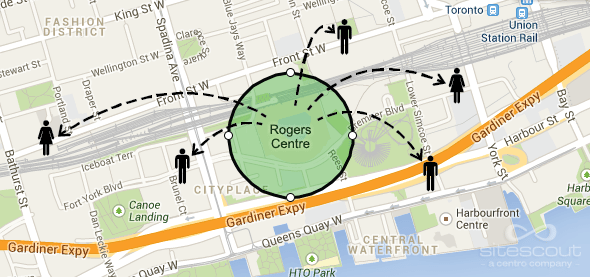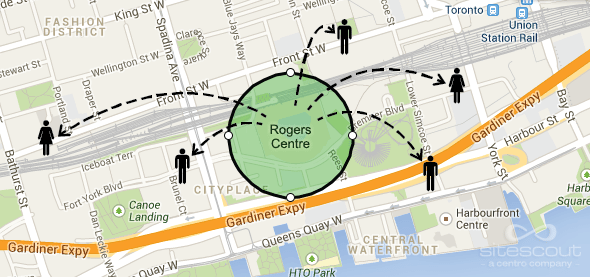You’ve built an app that has a lot of potential in the app market and now you need to consider your monetization strategy. If your app doesn’t offer enough value beyond similar free options, or if you can’t prove that value upfront, many users will search for a free alternative in the App Store. For this reason, relying on advertising to generate revenue is a good option to consider for your app monetization strategy.
According to Gartner Research, global mobile ad spend is forecasted to grow to $41.9 billion by 2017, which is a good reason for app publishers to start paying more attention to in-app advertising. However, while mobile ads offer many benefits such as gathering consumer data, they can often be intrusive and distracting for the user. So how do you achieve a sustainable stream of revenue without sacrificing the user experience? This post will provide a brief introduction to in-app advertising fundamentals to help you determine the best ad monetization strategy.
Quality of Content
Both app publishers and advertisers must understand that in-app ads become a part of the overall user experience. Therefore, you need to ensure that the content doesn’t drive the user away, but instead, entices them. Ultimately, ads should provide an enjoyable experience for the user, addressing their needs and interests specifically. Whether it be a native advertisement, video, or interstitial interactive ad, your ads should be aesthetically pleasing and valuable. To achieve this, understand what your target audience would want to look at for 30 seconds. An overall better user experience will result in higher engagement and conversion rates.
Focus on Your Target Audience
Compared to mobile Web, in-app advertising can provide a better solution to accurately target and capture users’ attention and urge them to interact with the brand. In-app advertising provides a closer connection from the brand to the user, on a more personal level, which means that content needs to be tailored to the target audience. Users are expecting higher levels of personalization so consider your users’ expectations before executing your mobile ad.
If ads aren’t properly targeting the right audience with quality content, both the app publisher and advertiser will suffer the consequences of app abandonment rates. Simply put, irrelevant and interruptive ads will amount to a poor user experience.
Placement and Frequency
Command your users’ attention without being too intrusive. Alongside the placement of the ad, you must also consider the frequency in which your ad will be shown. If you wait too long to show an ad, conversion rates will suffer. If you show it too often, your users will get frustrated and exit out of the app, potentially uninstalling it altogether. For example, a good benchmark is about 5-10 minutes of viewing time in between each video ad.
Before you plan to integrate an advertisement into your app, ask yourself these questions:
- How can we optimize the user experience?
- Will these ads take away from the design?
- How are these ads relevant or valuable for the user?
Choose the Right Ad Format
As mobile continues to evolve, so do the technical capabilities of in-app advertising. There are many types of mobile ads such as SMS, search, and web display, however, app display ads hold great potential in terms of user engagement and personalization. It’s important to consider the appropriate format for your target audience to yield a high ROI. Here are 8 common types of in-app ads to consider:
1. Standard Banner Ads: Standard banner ads are sharp and clean, compelling your users to click on them. This is the most popular mobile ad format because it’s unobtrusive, positioned at the top or bottom of the screen. Banner ads rely heavily on brand recognition, with little space to provide detailed information. This is a simple and safe way for a brand to get their name out to as many people as possible without distracting the user too much.
2. Interstitial Ads: These full-screen ads take over a user's screen, in turn, increasing user engagement. They are often placed when an app is loading or after an app is closed. Interstitial ads offer users a chance to partake in high-level engagement with an advertisement’s product, often including call-to-actions. A disadvantage to this type of ad is how intrusive it can be for the user.
3. Hyper-Local Targeted Ads: Many apps ask for permission to access the geolocation data of the phone when the user first downloads the app. These ads use a smartphone’s GPS data to geographically target audiences with the purpose of delivering relevant ads. This kind of ad is particularly common with retail apps, for example, offering promotions and deals to shoppers nearby.
Source: Marketing Land
4. Notification Ads: This type of ad is designed to pop up in the mobile device’s status bar at the top of the home screen to make users more aware of the ad’s presence. A disadvantage to this type of ad is that many users may get annoyed, which may damage your app’s image.
5. Capture Form: Relying on user opt-ins, these ads offer incentives (such as points) for users who enter their email addresses. This form of advertisement is often used in mobile games.
6. Native Ads: Native ads are seamlessly integrated and effectively align with how users interact with a mobile site or app. These are ads that don’t appear to be ads at first glance, making them more easily accepted by the target audience. Rather than presenting a banner with relevant information, native ads attempt to seamlessly integrate with the app to achieve an optimal user experience.
7. Video Ads: Video ads typically have high levels of user engagement and are simple, yet effective. They require a substantial budget, but offer high conversion rates, especially when the content is relevant and captivating for the user. When using a video ad, you need to decide whether you want it to be a pre, mid, or end-roll:
Pre-Roll: Pre-roll is a video ad that appears before the video has begun. According to Medialets, most people won’t watch a video ad all the way to the end. More than 80% will watch at least the first three-quarters of a video ad, but only a third will actually finish it. Therefore, the main message or call to action should come first to increase the chances of your target audience viewing it.
Mid-Roll: These are ads that occur during the middle of the video content. They typically have a higher completion rate than both pre and post-roll ads because viewers have already watched some of the video content and are less likely to exit out of the video.
Another considerable reason why mid-roll ads prove to be successful is that they are scheduled similarly to television commercials that viewers are accustomed to seeing. For this reason, mid-roll ads don't bother the viewer in the same way other advertisements might.
Post-Roll: Post-roll ads are placed at the very end of the video. There are some occasions in which post-roll video ads can be very effective. For example, if you're using the ad as a call-to-action.
Non-Skippable Vs. Skippable: With video ads, you can either decide to have a skippable ad or a non-skippable ad. A non-skippable video ad obliges the user to watch the ad all the way through and can achieve higher completion rates. However, skippable pre-roll ads are a good option for a more user-friendly experience. While more users will see your message with non-skippable ads, a higher completion rate doesn't mean the ad was retained and accepted by the user. The quality of content is what will resonate with your target audience.
8. Contextual Ad Overlays: Overlay ads are displayed while videos play, most commonly at the bottom of the screen, without interrupting the viewing experience. Overlay ads are becoming much more complex with animation and even interactivity.
There are many reasons users will uninstall an app, most commonly because of a poor user experience and lack of value. Ultimately, your ad monetization strategy shouldn’t contribute to the list of reasons why users may want to delete your app. If executed properly, your ad monetization strategy will result in boosted revenue and user satisfaction.


